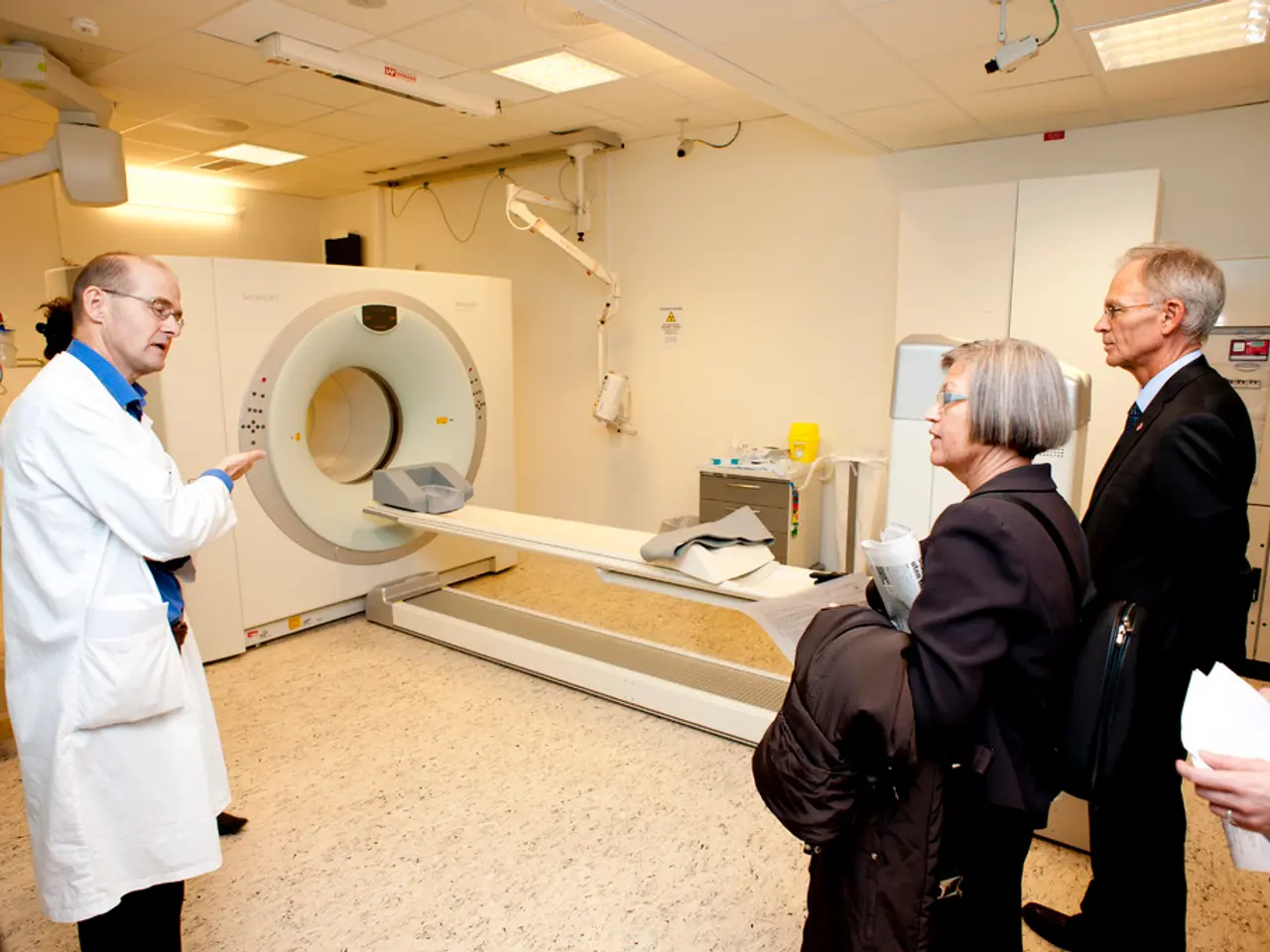Medical Official Praises Tech Revolution as New Radiotherapy Equipment is Unveiled
The UK government has announced a significant investment of £70 million to modernise and expand radiotherapy infrastructure across 28 NHS hospitals in England. The rollout of new linear accelerator (LINAC) machines is set to begin in August 2025, marking a crucial step towards improving cancer care services [1][2].
The new machines are set to bring numerous benefits, including increased treatment capacity, reduced appointment times, and improved imaging capabilities. For instance, at University Hospitals of Derby and Burton (UHDB), the new machines are expected to increase capacity by up to 20%, shorten prostate cancer radiotherapy sessions from about 15 to 10 minutes, and provide improved imaging for more precise tumor targeting [2].
The advancements in technology aim to deliver faster, safer, and more effective cancer treatment, representing a significant stride towards better radiotherapy services across the NHS [2]. However, challenges remain, such as the fact that nearly one-third of cancer patients in England still wait too long to start treatment, missing the target of 85% beginning treatment within 62 days [4].
The Society of Radiographers (SoR) has highlighted that while upgrading machines is critical, it alone will not resolve problems such as workforce shortages and increasing demand. A whole-system approach, including investment in staffing and operational changes, is essential to truly improve cancer care [1].
Regarding Stereotactic Ablative Radiotherapy (SABR)—a precise form of radiotherapy that targets tumors with high doses over fewer sessions—the recent announcements do not explicitly detail expansion plans. However, the improved capabilities of new LINAC machines, including better imaging and precision, can facilitate wider use of SABR by enabling safer and more efficient delivery of this treatment modality [2].
Thousands of patients in England will benefit from the faster and safer cancer treatment offered by the new technology. Furthermore, the improved technology is expected to increase the availability of SABR cancer treatments, subject to adequate staffing, training, and integrated cancer care pathways beyond just machine upgrades [2].
In conclusion, the government’s investment in new radiotherapy machines in England is a vital modernisation step that should help reduce waiting times and improve treatment quality. However, to fully realise these benefits, including wider SABR availability, the NHS must accompany this equipment upgrade with systemic improvements such as workforce expansion and policy focus on comprehensive cancer treatment delivery [1][2][4].
References: [1] Insights. (2023). Modernising Radiotherapy Services: The Plan for Change. Retrieved from https://www.insightsinfood.co.uk/modernising-radiotherapy-services-the-plan-for-change/ [2] NHS England. (2023). New Radiotherapy Machines to Improve Cancer Treatment. Retrieved from https://www.england.nhs.uk/2023/03/new-radiotherapy-machines-to-improve-cancer-treatment/ [3] Society of Radiographers. (2023). Radiotherapy Workforce Crisis. Retrieved from https://www.sor.org/resources/radiotherapy-workforce-crisis [4] Cancer Research UK. (2023). Radiotherapy Waiting Times in England. Retrieved from https://www.cancerresearchuk.org/about-cancer/causes-of-cancer/treatment/radiotherapy/waiting-times-radiotherapy-england
The UK government's investment in digital health technology, specifically new linear accelerator machines for radiotherapy, promises to enhance health-and-wellness services, particularly in the management of medical-conditions like cancer. These advancements aim to deliver faster, safer, and more effective cancer treatment, including reducing appointment times and improving imaging capabilities. However, to truly improve cancer care, a whole-system approach, including investing in workforce expansion and operational changes beyond just technology updates, is essential. In addition, the improved capabilities of new machines can facilitate the wider use of Stereotactic Ablative Radiotherapy (SABR) for more precise treatment of various cancer types.




